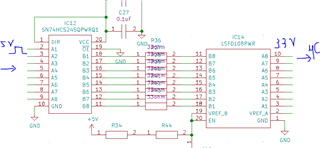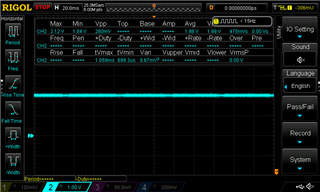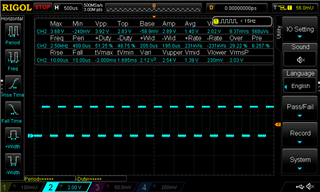Other Parts Discussed in Thread: PCF8575, SN74AHCT125, SN74AHC1G125, SN74HCS245, SN74AHCT245, SN74LXC8T245, SN74HCS595, SN74AHCT595
Hello,
I am using LSF0108 and PCF8575 to generate PWM signals and toggle control signals respectively for my motors (step and direction signals) over 2 meter long wires.
I realize that LSF0108 can convert PWM signals to 5V but as soon as I connect motor control signals they get clamped to around 2.5V. May be that is because LSF0108 and PCF8575 can't supply to load.
I tried searching for answer. Found few options here https://e2e.ti.com/support/logic-group/logic/f/logic-forum/929326/looking-for-an-ic-that-will-convert-3-3v-pwm-bit-banging-to-5v-signal-that-can-also-be-able-to-drive-50-100ma.
However, I would like to ask that in my case, what would be the best IC I should be using that can help decreasing clamping effect?
To explain more about control signals I am trying to generate:
I have motor that need 3 Signals and provides 1 feedback signal (so total 4 signals at 5V). and my controller is at 3.3V.
To send 3 signals (2 continuous High / low signals and 1 PWM signal) to motors I am using PCF8575 (two control two high/low signals) and LSF0108 for PWM signals right from controller.
And to receive feedback signal from motor (Feedback signal is PWM signal) I am using SN74HCS245QPWRQ1 > 33ohm damping resistor > LSF0108 > 3.3V GPIO at controller.
So for all three selection (PCF8575 - to send good output signal), LSF0108 (to send good PWM signal on long wires) and SN74HCS245QPWRQ1 (To receive PWM signal) I am looking for some good options.
So far my conclusion is, I need voltage follower op-amp to send good signal and to receive PWM signal (i. e. Low impedance to send the signal and High Impedance to receive the signal).
But I need some good suggestions to pick the right component for my design. I have 10 of these motors talking to my controller continuously so lot of signals.
Some noise immunity tips would be helpful as well.








